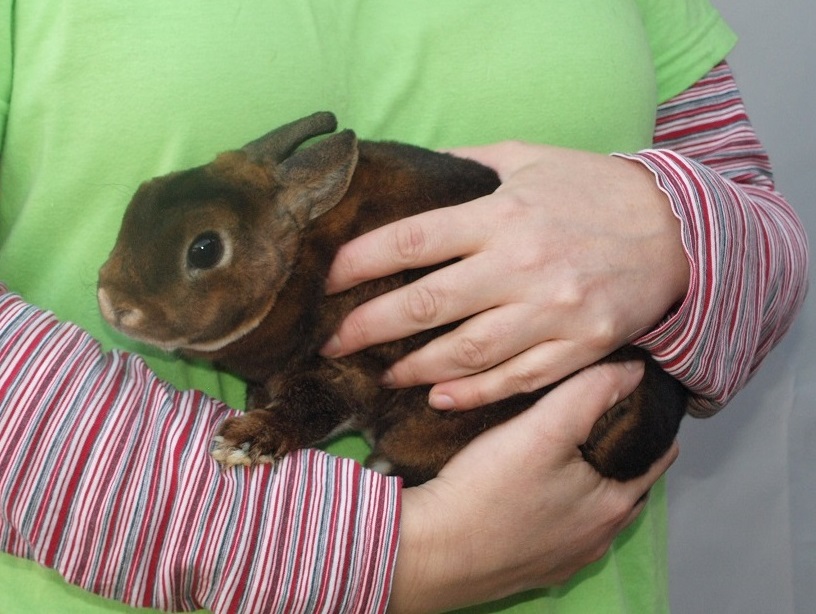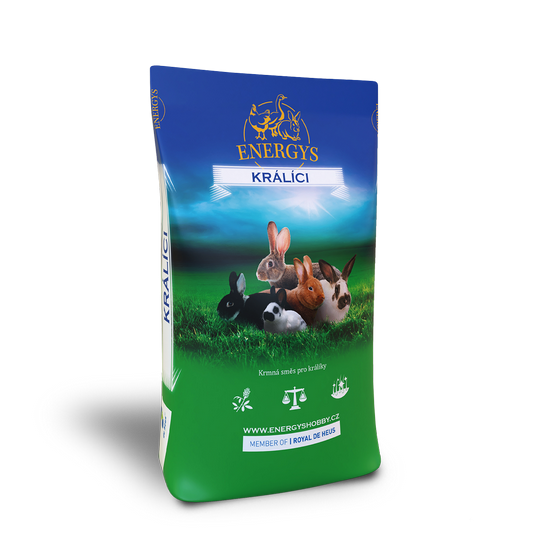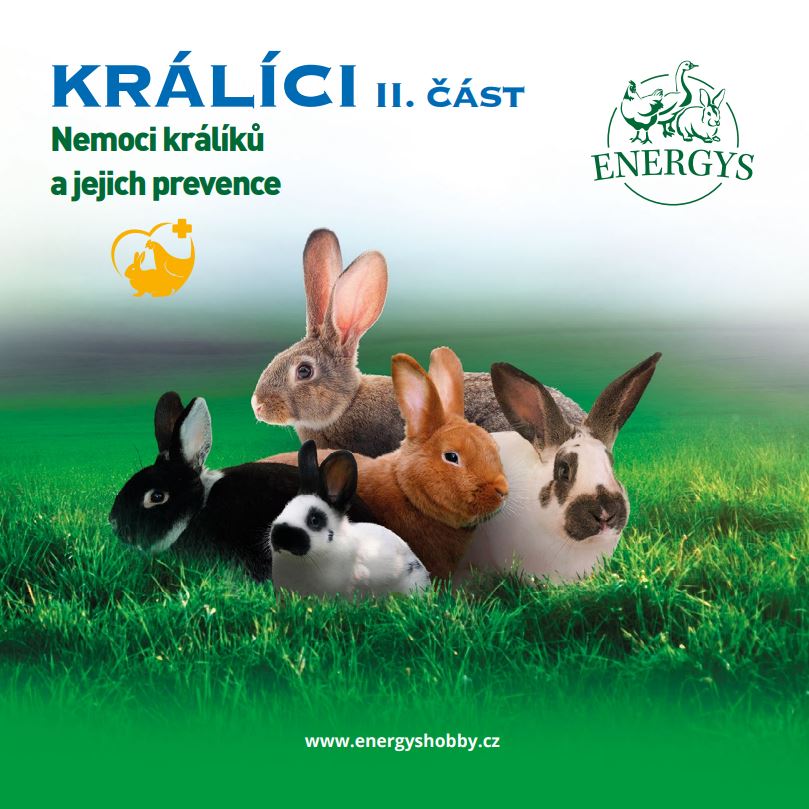How to Domesticate a Rabbit
A frequent topic, and indeed a standard requirement of budding pet rabbit breeders, is the suitability and ability of domesticating a new rabbit companion. Faculties for “friendliness” are partly innate and partly influenced by the external environment. When domesticating a rabbit, it is necessary to follow the recommended guidelines, as the stage of socialization at an early age has a significant influence on the behavior of the rabbit in adulthood.
Rabbits and temperament
From the point of view of the genetic foundation of temperament the influence of the breed plays a crucial role in rabbits. We know breeds with a fairly lively temperament (e.g. hare, ermines, Czech spotted rabbits, etc.), as well as amore phlegmatic gene pool (e.g. French rams, dwarf rams). No less important is the family tendency, as the behavior of rabbits is a relatively hereditary matter. One of the criteria for the purebred breeding of rabbits should (apart from health and exterior aspects) be a stabilizing selection of individuals with appropriate responses to the external environment and breeders.
Rabbit purchase options
From the point of view of pet breeds of rabbits, the most preferred are dwarf rabbits in the Czech Republic. There are multiple sources to secure your rabbit from. The biggest guarantee is provided by the purchase from a breeder organized in the Czech Breeders Association. Such a breeder usually offers a standardized rabbit with a different fur color than required by the standard (e.g. black rabbit with a white spot on his nose). But even such a rabbit can provide a person with great joy as a companion. The advantage is that we see the parents of the rabbit, the environment and the right breeder will give us advice.

It is less advantageous to buy from a specialized pet store where mainly dwarf rabbits are offered; purebred rabbits with pedigrees are offered only sporadically. The least suitable alternative is buying through an advertisement where one cannot see the animal being bought. One possibility is to buy a rabbit from the animal shelter. However, such rabbits are older and mostly have poor contact with humans and taming them is more problematic.
Transport to a new home
For transportation, it is best to choose either a special plastic box (known for the transport of cats or small dogs) or an ordinary, but strong cardboard box with sufficiently secure ventilation. It is suitable to lay bedding and hay on the bottom.
First phase – resting
The young rabbit must be housed in a cage on arrival. Prepare the cage for the rabbit before it arrives. Provide the rabbit with plenty of water and hay / straw. It is not necessary to provide grain feed on the first day. It is recommended to cover the cage with a towel to create half-light which the rabbits like. Of course there is a sleep mode, at least the first three days. During the second day at the latest, the rabbit should start to feed and drink, and he should also start to defecate regularly.
Second phase – touch
The first week after arrival can be marked for a critical period. Most rabbits, however, manage it well. After about a week, the rabbits can gradually get used to direct human contact – touch. Stroking the rabbit during or after feeding seems to be the best. Pet the rabbit on the back rather than on the head; some rabbits don’t like being touched on the head. Perform this phase several times a day, always speaking to the rabbit in a calm way and avoiding abrupt movements.
The third phase – movement
Approximately 2 – 3 weeks after arrival, it is advisable to take the bunny out of the cage and caress it on your lap. Rabbits like stereotype and become accustomed to the owners coming from work and look forward to being pet. In the case that you have a room secured, you can even briefly let the rabbit roam free. However, the free movement of the rabbit should always be controlled, and for a maximum of 1-2 hours per day. This is enough time for physical activity and exercise outside the cage. Most pet rabbits can learn their name, although it is more difficult than with dogs and cats.
Best rabbit age
The most appropriate age for taking a rabbit is 7 – 10 weeks , depending on its development. The phase of socialization with people is best realized by the 3rd to 4th month of the rabbit age. At this age, we have to treat the rabbit calmly and teach it to play and other domestication techniques. Older rabbits are less adaptable to domestication, but there is considerable individual variability.

Související články
10. dubna 2024
Zveřejnil: Ing. Lucie Humeni
Chov zakrslých králíků jako domácích mazlíčků získává stále více příznivců. Nevyžaduje velké množství prostoru a je ideální pro lidi, kteří žijí v menších domácnostech nebo bytech. Zakrslí králíci jsou také velmi přátelští, takže se není čemu divit, že si je lidé vybírají pro tento účel čím dál častěji. Stejně jako u všech zvířat je i…
30. srpna 2022
Zveřejnil: Tým specialistů na chov králíků De Heus
V tomto článku se budeme věnovat několika nemocem králíků – ušnímu svrabu, Tyzzerově chorobě a tepelnému stresu.
24. srpna 2022
Zveřejnil: Tým specialistů na chov králíků De Heus
V tomto článku se podíváme na dvě nemoci – E.coli a enterokolitida
2. srpna 2022
Zveřejnil: Tým specialistů na chov králíků De Heus
V tomto článku se podíváme na dvě časté nemoci králíků myxomatózu a infekční rýmu.
13. července 2022
Zveřejnil: Tým specialistů na chov králíků De Heus
V následujícím článku se budeme věnovat moru králíků – RHD nebo VHD (virovému hemoragickému onemocnění králíků).
Související produkty

KRÁLÍK ZAKRSLÝ
Kompletní granulované krmivo pro zakrslé králíky s vysokou stravitelností. Obsahuje vysoký podíl vlákniny (vysoký obsah vojtěšky a travních úsušků) a snížený obsah cukru a škrobu. Obsahuje lněné semínko, které má pozitivní vliv na kvalitu srsti. Vhodné pro každodenní krmení. Doporučujeme zajistit králíkům nezávadnou čerstvou vodu a seno.

KRÁLÍK CHAMPION
Krmivo pro výstavní králíky, neobsahuje kokcidiostatika. Unikátní složení významně podporuje kvalitu a růst srsti. Podávejte při přelínávání a minimálně 2 měsíce před zahájením výstavní sezóny.

KRÁLÍK GOLD FORTE
Prémiová krmná směs ideální svým složením pro březí a kojící samice. Pro intenzivní výkrm králíků do období min. 5 dnů před porážkou. Podporuje rychlý růst, zmasilost a výborný zdravotní stav. Obsahuje kokcidiostatikum, čímž snižuje riziko úmrtnosti.

KRÁLÍK KLASIK FORTE
Určená pro výkrm králíků až do doby min. 5 dní před porážkou. Vhodné pro dosažení vysoké zmasilosti a výborného zdravotního stavu. Díky obsahu kokcidiostatika snižuje mortalitu zvířat.

KRÁLÍK KLASIK
Pro celou dobu výkrmu králíků. Podporuje vysokou zmasilost a vynikající chuťové vlastnosti králičího masa. Bez kokcidiostatik.

KRÁLÍK START
Pro mladé králíky od začátku příjmu krmiva do 4–6 týdnů po odstavu. Krmivo pomáhá významně snížit úhyn v období okolo odstavu. Obsahuje zvýšený podíl vlákniny a méně škrobů. Neobsahuje kokcidiostatikum.

